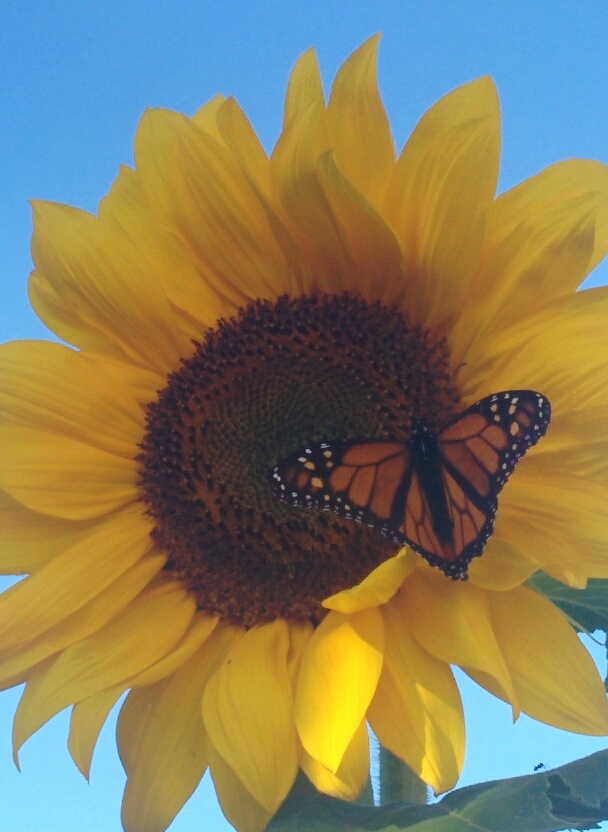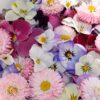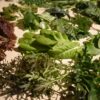Ah! The midsummer garden… If all went well with your planning and planting, you will be reaping the rewards continually now.
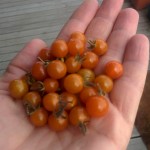
Harvest daily all your ripening crops of tomatoes, chillies, bell peppers, cucumbers, beans, peas, zucchini, globe artichokes, and eggplant. Timely picking of fruit and vegetables can encourage more flowering and more fruit. Harvest flowers of feverfew and chamomile for herbal teas and tinctures, also calendula petals and yarrow tops. Oregano is also best harvested and dried as it starts flowering. If you haven’t yet, and they show signs of being ready, harvest garlic and onions. Make pesto from harvested basil.
.
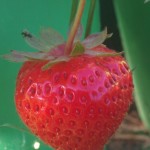
Summer fruiting berries are in full production now too, so enjoy them before the birds get them! Protect with netting, and continue to water and feed well. Cut back summer fruiting red raspberry canes to ground level after harvesting – leaving just one or two of the strongest new season canes and stake them.
.
Stone and pip fruits are starting to ripen with a glut of plums, peaches and nectarines soon to follow. Get your preserving recipes ready! Prune peaches, nectarines and kiwifruit.
Grapes can be trimmed and new growth tied down.
.
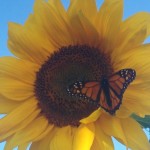
Bees & Butterflies are active in the garden now with the profusion of summer flowers. On hot and dry days, remember to put out a bee watering hole in your garden to keep these hard workers hydrated. Do not spray (even organic pesticides) when bees are most active during the day, and leave a few of the basil and parsley in your garden to flower – not only do the bees love the flowers, but your plants will set seed and you can collect your own seed for the next growing season.
.
Cut back and dead head summer flowers to encourage a new flush of flowers.
.
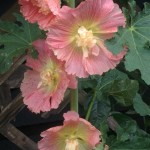

Edible flowers can be a great addition to your dishes, so make use of your calendula petals, roses, lavender, sage and thyme blossoms, chive blossoms, zucchini flowers, sunflowers, nasturtiums, violas and pansies, and even hibiscus flowers and hollyhocks.
Roses can be given a summer prune so that you can enjoy flowers again in autumn.
.
Save seed of your herbs, lettuces and vegetables that are going to seed. Planting from your own garden stock gives you an advantage next growing season. Be careful not to save seed (unless you only grew one variety, or feel like experimenting) of things that easily cross-pollinate such as peas, beans and pumpkins.
Seed potatoes can be put in for an autumn crop.
Sow fast growing leaf vegetables and herbs like lettuce, mustard greens, coriander and rocket every few weeks for a continuous harvest. Start sowing of winter vegetables such as kohlrabi, cabbage and Brussel’s sprouts. Sow silverbeet, beetroot and spinach as well as parsnips, peas and other cold-tolerant vegetables. Flowers to be sown now include violas, primulas, poppies and sunflowers.
.
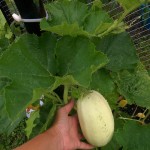
Plant seedlings of summer vegetables that will still grow and develop quickly for another crop before winter sets in, e.g. zucchini, eggplant, tomato (especially cold season tomatoes such as Subarctic Plenty, Russian Red and Tobolsk), capsicum and chillies. Calendula, alyssum, dahlia, bergamot, and coneflower (Echinacea) seedlings and young plants can be transplanted into the garden now.
.
Spring flowering bulbs like Anemone and Ranunculus can be set out.
Ongoing tasks such as watering, weeding, mulching and feeding should be kept up throughout the rest of summer.

